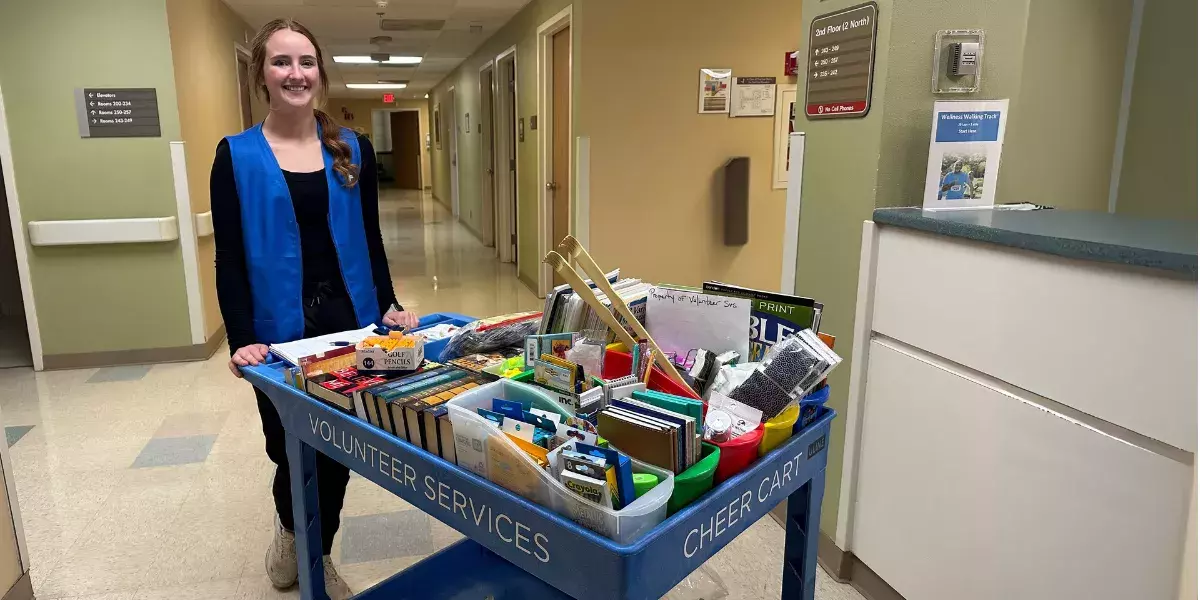
Gibbs Cancer Center harnessing power of virtual reality to improve balance in vestibular and neurologic conditions
Spartanburg Regional Healthcare System is harnessing the power of virtual reality as an effective tool to treat patients struggling with balance.
Rehabilitation services recently invested in a Bertec Computerized Dynamic Posturography system as an advanced treatment technique for patients with a wide variety of challenges such as strokes, concussions, amputations, oncology symptoms, diabetic neuropathy and other neurological conditions.
Therapists can program the immersive virtual reality system to represent many different environmental conditions and experiences designed to help patients re-establish their balance and movement in public spaces so they can return to living a full life again.
Environments like parks, nature walks, busy sidewalks and grocery stores are just a few scenarios that patients can experience when using the system to detect balance problems and assess weight shifting.
“A lot of times people over-rely on their visual environment to balance them, but if they’re in a setting like in a crowd or grocery store and are over-stimulated, it can make them feel dizzy, nauseous or throw them off balance,” said Amy Muncy, a board-certified clinical specialist in neurologic physical therapy. “We’re using this technology to prepare patients to handle any environment, especially in the community so they can stay active and moving.”
Based on the system's program, therapists can detect the reliability of someone's vision, touch and inner ear for balance and measure things like weight shifting and range of motion.
"If our eyes are open, we're using vision, but if what we're looking at is not accurate, how does that affect balance?" Muncy said. "Now, we can measure that and add visual conflicts to teach them not to rely on visual movement."
Patients can experience the Bertec Virtual Reality System in the Oncology Rehabilitation Services department at Gibbs Cancer Center – Pelham. After using the therapy to identify the root causes of balance issues, therapists can use that data to create an individualized treatment plan to improve each patient's mobility and balance.
At times with cancer patients, for example, chemotherapy may cause neuropathy, which can lead to numbness in extremities, motor impairment and other conditions that affect balance.
Brain cancer patients have seen benefits from this form of therapy after cancer treatment. About 25,000 people are diagnosed with cancerous central nervous system tumors each year in the U.S., according to the National Cancer Institute.
“We encourage patients to enter rehab as soon as possible and not wait until they notice deficits,” Muncy said. “With oncology rehab, we can address cancer-related fatigue and strength and balance to help prevent them from getting to the point where they’ve significantly restricted their mobility because of falling.”
Muncy said more research is coming out on how virtual reality is recommended in physical therapy settings. By having the system at Gibbs Cancer Center – Pelham, therapists can serve more patients in the Upstate.
"Our number one goal is to reduce or eliminate falling," Muncy said. “It's better to prepare them for environments they'll encounter outside of the clinic."
To schedule a new patient appointment with Oncology Rehabilitation and inquire about the immersive virtual reality therapy, call 864-560-5150 or speak with your oncologist or primary care doctor.












